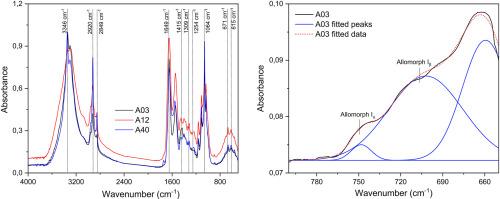Cellulose-producing acetic acid bacteria from corozo fruit (Bactris guineensis): isolation and characterization
IF 3.8
Q2 BIOTECHNOLOGY & APPLIED MICROBIOLOGY
引用次数: 0
Abstract
Acetic acid bacteria (AAB), members of the Acetobacteraceae family, are known for their ability to synthesize bacterial cellulose (BC), a biopolymer of growing interest in the food, biomedical, and materials industries. Compared to plant-derived cellulose, BC offers higher purity and superior physicochemical properties; however, its large-scale production remains limited by the high cost of cultivation media and nutritional demands of AAB. In this study, corozo fruit (Bactris guineensis) fermentations were explored as a natural source of BC-producing bacteria. Forty-five bacterial isolates were obtained and biochemically characterized, of which five demonstrated cellulose production in Hestrin–Schramm (HS) medium under static conditions. Strain A03 showed the highest yield (9 g/L), comparable to the reference strain Komagataeibacter xylinus, followed by strains A05, A12, and A40 with intermediate yields, and strain A25 with the lowest. Molecular identification through 16S rRNA gene sequencing revealed high similarity to Komagataeibacter hansenii. The biopolymers were characterized using FTIR spectroscopy, scanning electron microscopy (SEM), and thermogravimetric analysis (TGA), confirming the structural and thermal features typical of BC, with strain-dependent differences in crystallinity, fiber morphology, and hydrogen bonding. These native K. hansenii strains represent promising candidates for the development of cost-effective, sustainable BC production strategies and offer potential for integration into circular bioeconomy models based on regional biodiversity.

产纤维素醋酸细菌的分离与鉴定
醋酸细菌(AAB)是醋酸杆菌科的一员,以其合成细菌纤维素(BC)的能力而闻名,细菌纤维素是一种生物聚合物,在食品、生物医学和材料工业中越来越受到关注。与植物源性纤维素相比,BC具有更高的纯度和优越的理化性能;然而,其大规模生产仍然受到培养基成本高和AAB营养需求的限制。在本研究中,探索了corozo水果(Bactris guineensis)发酵作为bc -产菌的天然来源。对45株分离菌进行了生化鉴定,其中5株在静态条件下在Hestrin-Schramm (HS)培养基中产生纤维素。菌株A03的产量最高,为9 g/L,与参考菌株Komagataeibacter xylinus相当,其次是菌株A05、A12和A40,产量中等,菌株A25最低。通过16S rRNA基因测序进行分子鉴定,发现与komagataebacter hansenii高度相似。利用红外光谱(FTIR)、扫描电镜(SEM)和热重分析(TGA)对生物聚合物进行了表征,证实了BC的典型结构和热特征,并在结晶度、纤维形态和氢键上存在菌株依赖性差异。这些本地汉斯氏k.h hansenii菌株为开发具有成本效益、可持续的BC生产策略提供了有希望的候选者,并为基于区域生物多样性的循环生物经济模式的整合提供了潜力。
本文章由计算机程序翻译,如有差异,请以英文原文为准。
求助全文
约1分钟内获得全文
求助全文
来源期刊

Biocatalysis and agricultural biotechnology
Agricultural and Biological Sciences-Agronomy and Crop Science
CiteScore
7.70
自引率
2.50%
发文量
308
审稿时长
48 days
期刊介绍:
Biocatalysis and Agricultural Biotechnology is the official journal of the International Society of Biocatalysis and Agricultural Biotechnology (ISBAB). The journal publishes high quality articles especially in the science and technology of biocatalysis, bioprocesses, agricultural biotechnology, biomedical biotechnology, and, if appropriate, from other related areas of biotechnology. The journal will publish peer-reviewed basic and applied research papers, authoritative reviews, and feature articles. The scope of the journal encompasses the research, industrial, and commercial aspects of biotechnology, including the areas of: biocatalysis; bioprocesses; food and agriculture; genetic engineering; molecular biology; healthcare and pharmaceuticals; biofuels; genomics; nanotechnology; environment and biodiversity; and bioremediation.
 求助内容:
求助内容: 应助结果提醒方式:
应助结果提醒方式:


